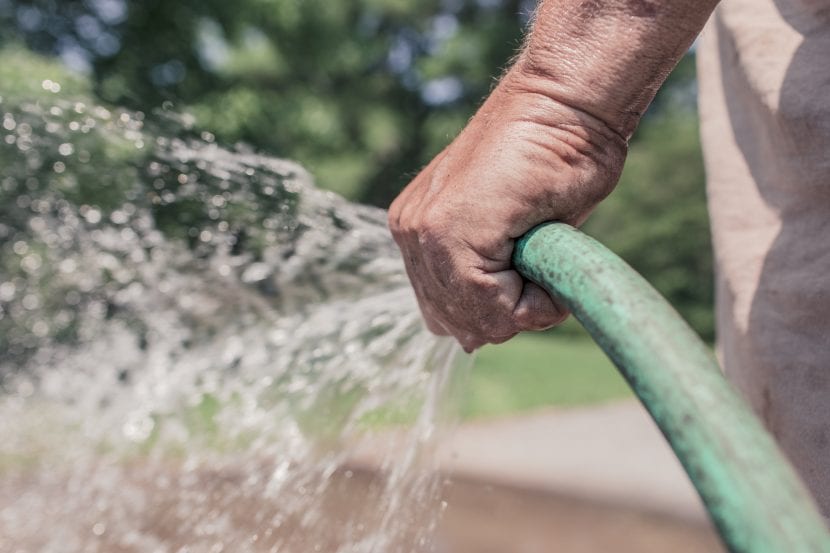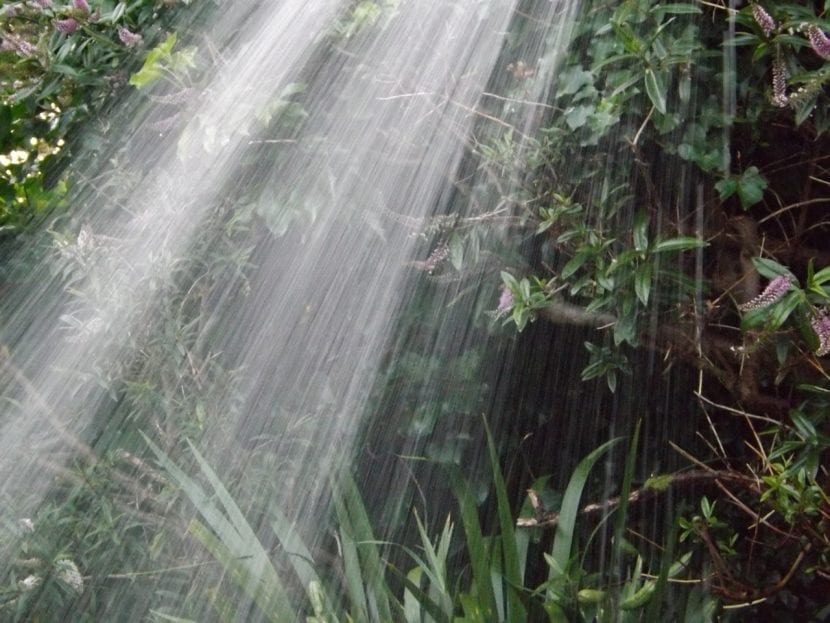
Often when we go to water, we just fill the watering can or grab the hose and get on with it, but the truth is that it is very important to know the temperature of the irrigation water to avoid problems. And it is that, whether it is too cold or too hot, we could damage them.
Let us know what consequences could be if we water with water that is not at the right temperature.
Effects of watering with hot / cold water

Watering with water that is at a good temperature, that is, that is neither cold nor hot, will help the roots to absorb the nutrients dissolved in the soil without any problem; On the other hand, if said temperature is not adequate, they would immediately weaken.
Cold irrigation water
If it is watered with cold or very cold water, the nutrients dissolve more slowly, so it will be more difficult for the roots to get them. Also, if the temperature is extreme, root shock and intense perspiration could occur in aerial parts (leaves and stems).
Hot irrigation water
If it is too hot (over 30 degrees Celsius), even a cactus will go bad. Increasing the kinetic energy of molecules it would cause an increase in the speed of the chemical reactions that take place in the plant, which could lead to collapse.
This means that while at the beginning we might see them grow faster, in the end there would come a time when they would run out of power, their health would deteriorate and pests would attack them. In addition, the higher the temperature, the lower the oxygen concentration and, therefore, the feeding capacity of the plants would be reduced.
What is the right temperature?

Although each type of plant has its needs, you don't really need to get too complicated. As long as the temperature oscillates between 20 and 25ºC, the optimum being 23ºC, there will be no problem in watering with that water as it will maintain the optimal oxygen concentration. During the winter, if it gets too cold, we can fill a container with water and put it to heat a little in the microwave.
Did you find this topic interesting?
I think that what is said about the hot water temperature for watering with temperatures up to 43 centigrade is not correct. The temperature of the irrigation water should not exceed 25 centigrade, this in relation to the content of dissolved oxygen in the irrigation water. At 43 centigrade the water no longer retains any oxygen. To conserve certain concentrations of oxygen in water it is necessary that the water is between 20 and 23 centigrade. The oxygen dissolved in the irrigation water is necessary for a good respiration of the roots.
Hi Fidel.
You're right. Thank you for the correction.
We have already updated the post.
Regards!
If a plant is watered at a temperature of 43 ºC, it can die or it can remain at a stable level, I would appreciate it if you could answer me quickly, because it is for a thesis work that I am doing thanks
Hi Luis.
If it is watered with a water that is at 43ºC the roots burn, literally, and the plant dies.
Greetings.
Thank you so much for everything !!!
Thank you very much, Olga, for your comment.